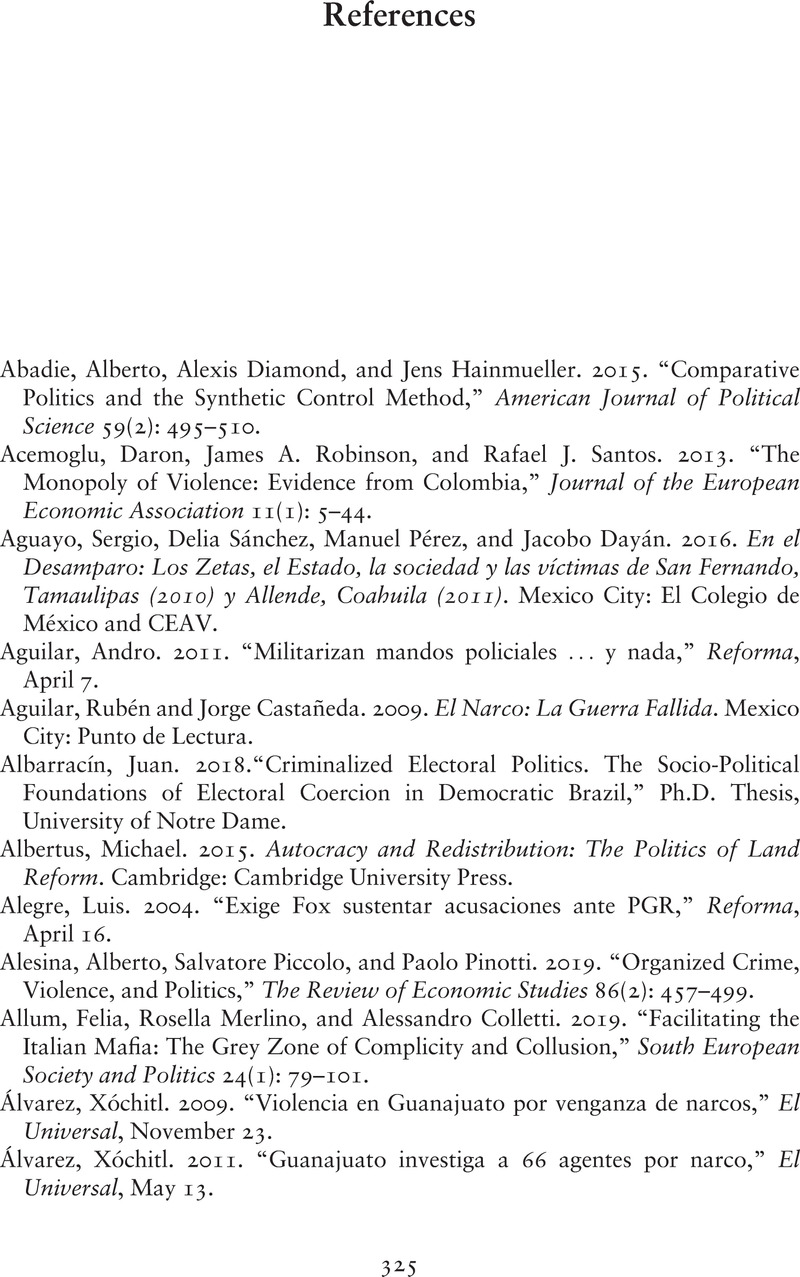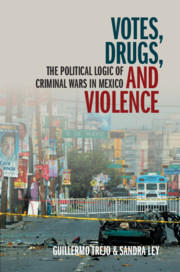Book contents
- Votes, Drugs, and Violence
- Cambridge Studies in Comparative Politics
- Votes, Drugs, and Violence
- Copyright page
- Contents
- Figures
- Maps
- Tables
- Preface
- Acronyms
- Introduction
- Part I A Political Theory of Criminal Violence
- Part II The Outbreak of Inter-Cartel Wars
- Part III The State’s War Against the Cartels
- Part IV The Rise of Criminal Governance: Subverting Local Democracy in War
- Appendix A Criminal Violence in Mexico Database (CVM)
- Appendix B Criminal Attacks Against Political Actors in Mexico (CAPAM) Database
- Appendix C Chapter 2. Multivariate Regression Models (Robustness Checks)
- Appendix D Chapter 4. Multivariate Regression Models (Robustness Checks)
- Appendix E Chapter 4. Natural Experiment (Additional Information)
- Appendix F Chapter 6. Multivariate Regression Models (Robustness Checks)
- Appendix G Chapter 6. Natural Experiments (Additional Information)
- References
- Index
- Other Books in the Series (continued from page iii)
- References
References
Published online by Cambridge University Press: 16 September 2020
- Votes, Drugs, and Violence
- Cambridge Studies in Comparative Politics
- Votes, Drugs, and Violence
- Copyright page
- Contents
- Figures
- Maps
- Tables
- Preface
- Acronyms
- Introduction
- Part I A Political Theory of Criminal Violence
- Part II The Outbreak of Inter-Cartel Wars
- Part III The State’s War Against the Cartels
- Part IV The Rise of Criminal Governance: Subverting Local Democracy in War
- Appendix A Criminal Violence in Mexico Database (CVM)
- Appendix B Criminal Attacks Against Political Actors in Mexico (CAPAM) Database
- Appendix C Chapter 2. Multivariate Regression Models (Robustness Checks)
- Appendix D Chapter 4. Multivariate Regression Models (Robustness Checks)
- Appendix E Chapter 4. Natural Experiment (Additional Information)
- Appendix F Chapter 6. Multivariate Regression Models (Robustness Checks)
- Appendix G Chapter 6. Natural Experiments (Additional Information)
- References
- Index
- Other Books in the Series (continued from page iii)
- References
Summary

- Type
- Chapter
- Information
- Votes, Drugs, and ViolenceThe Political Logic of Criminal Wars in Mexico, pp. 325 - 345Publisher: Cambridge University PressPrint publication year: 2020



